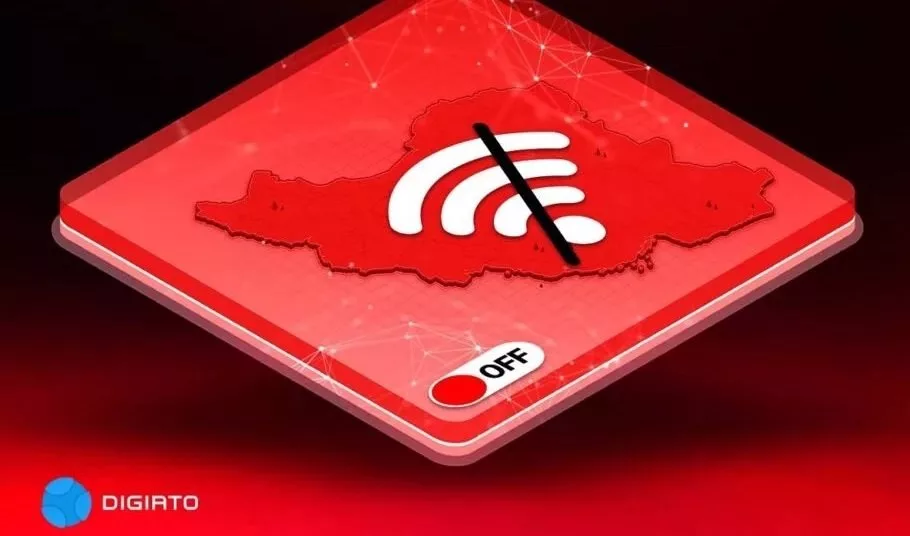
Iran Ranks Last in Internet Quality Among Major Economies, Report Finds
The Tehran E-Commerce Association has released its fifth report on internet quality in Iran. According to the report, there has been little improvement since the ...
The Tehran E-Commerce Association has released its fifth report on internet quality in Iran. According to the report, there has been little improvement since the previous edition published in January 2025. The association criticized the persistence of filtering policies, referring to them as a counterproductive choice that undermines security.
Iran Ranks Last in Internet Quality Among Top 100 GDP Countries
The report states that Iran's internet remains slow, unreliable, and heavily restricted. As a result, the country ranks as having the worst internet quality among the top 100 countries by GDP.
“If we exclude conditions during Israel's attack on Iran, there has been no significant change compared to the fourth report. User experience in Iran continues to be characterized as slow, unreliable, and restricted,” the report said. Iran ranked 97th out of 100 countries overall in internet quality.
The rankings were based on latency, restrictions, and speed, using data from Google CRUX, OONI, and Cloudflare Radar respectively. Iran's average performance across these metrics placed it at the bottom of the list.
Lifting Restrictions Could Improve Internet Quality
The report emphasized that sanctions have minimal impact on Iran's poor internet quality. It suggested that lifting filtering policies and addressing disruptions caused by VPN usage could lead to significant improvements.
The report stated: “Users should not accept poor internet service as inevitable. Unlike sanctions-related issues, the root causes of poor internet quality can be addressed through policy changes. Lifting filtering on social networks and functional websites, resolving VPN-related disruptions, and optimizing national resources could enhance digital businesses and rebuild public trust.”
More than 100 technology companies in Iran’s ICT sector echoed these sentiments in a joint statement. Their demands include removing filters from social networks and educational websites, increasing international bandwidth speed, and enabling new protocols like HTTP/6 and IPV6.
Class-Based Access Policies Under Scrutiny
The report criticized the government’s class-based internet access policies, which are described as a cycle of restrictive measures followed by partial access given to certain groups such as journalists, students, or businesses. This approach has led to widespread VPN usage among Iranian citizens.
A survey conducted in June 2025 highlighted this trend:
- 86% of internet users rely on VPNs.
- Instagram remains the most popular foreign social network, used by 63% of Iranians.
- Before 2022, only 62.2% reported using VPNs or proxies.
- Instagram serves as the primary income platform for 60% of social media monetizers.
- 93.8% of Iranian youth under 30 use VPNs regularly.
Starlink Adoption Shows Growth
The report noted a rise in Starlink satellite internet usage since late 2024. It also discussed disruptions to HTTP/3 protocols, which have negatively impacted internet performance. Tests revealed varied interference across Iranian ISPs, while adoption rates for HTTP/3 and IPV6 protocols remain below pre-war levels.
Criticism of Iran Access Policy
The report highlighted issues with Iran Access, a policy that restricts domestic websites from foreign access. Around 80% of Iranian government websites are inaccessible internationally. Despite some domains being removed from restrictions, others were added since the last report.
The report emphasized that this policy has had no measurable benefits and has created vulnerabilities. A recent hacking incident involving major financial systems within Iran further demonstrated the ineffectiveness of these restrictions.
RTT Analysis Places Iran Among War-Torn Nations
Round Trip Time (RTT) analysis was used to measure user experience based on speed. Data showed that Iran’s average RTT ranked only slightly better than countries like Sudan, Congo, and Ethiopia, many of which are affected by wars or economic instability.
Internal RTT measurements for frequently used Iranian websites in June revealed:
- 23% of websites ranked poor in RTT quality.
- 70% fell under average quality.
- Only 4% ranked good.
By comparison, Turkey displayed better results with only 5% of sites ranked poor and 22% ranked good.
The report concludes that Iran's internet quality remains among the lowest globally despite multiple opportunities for improvement through policy changes.










